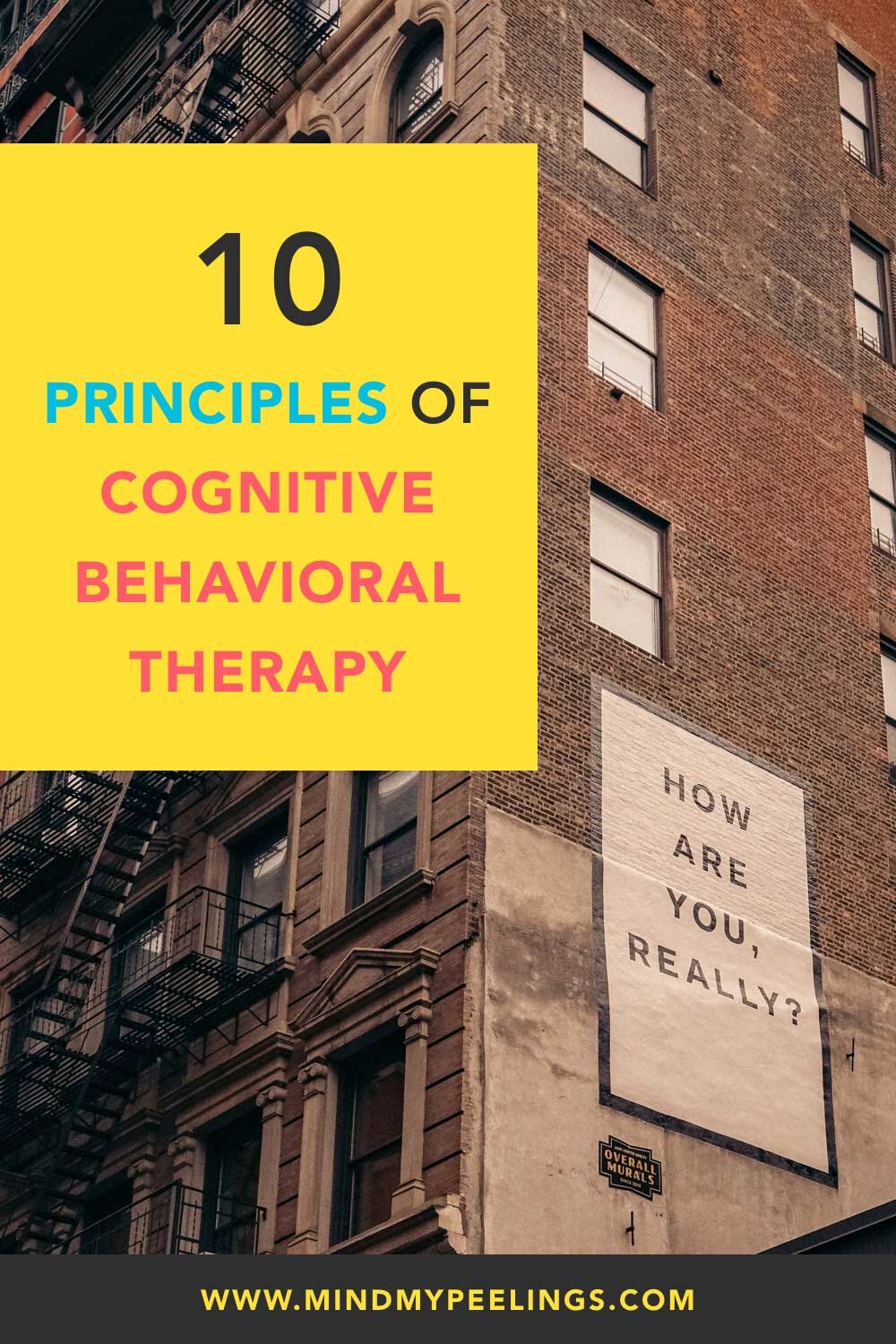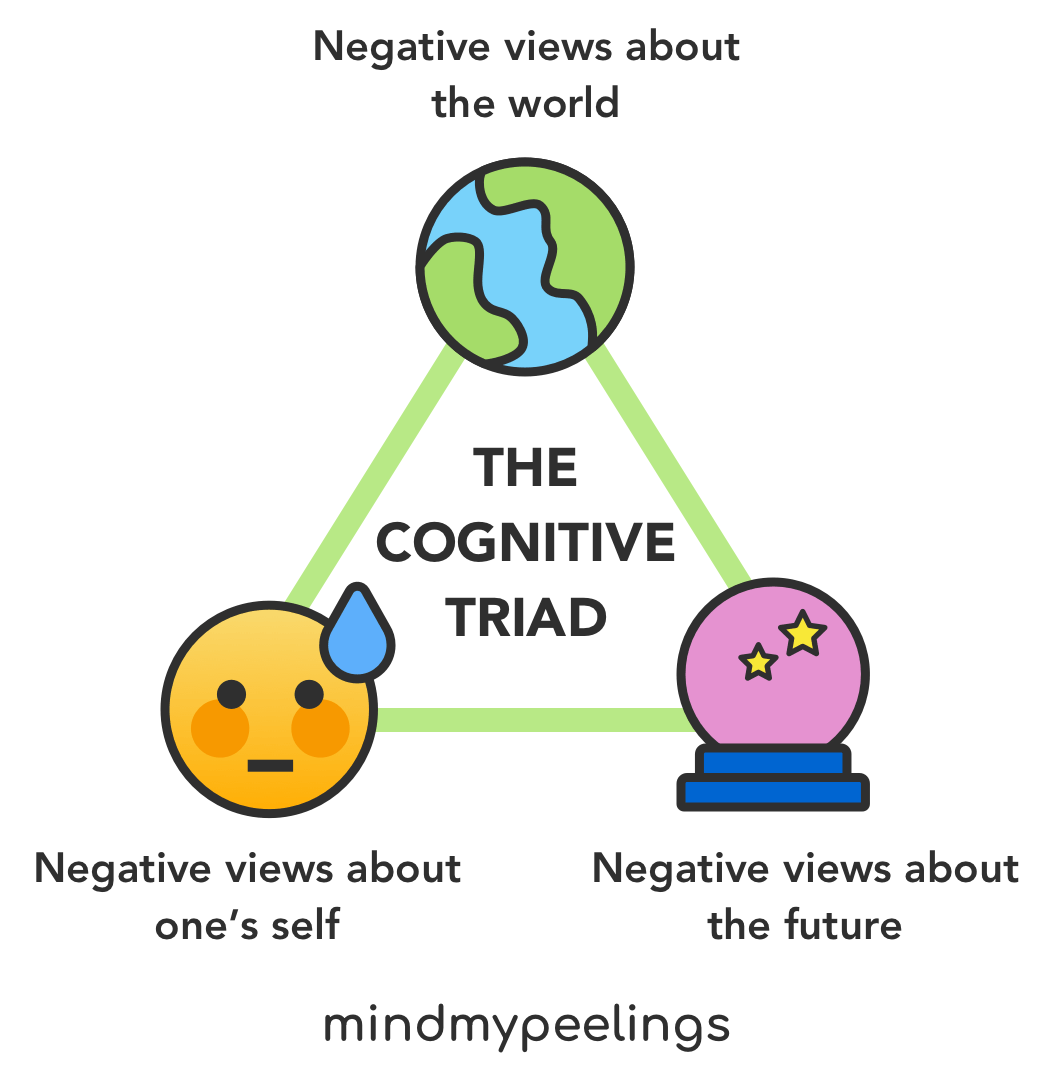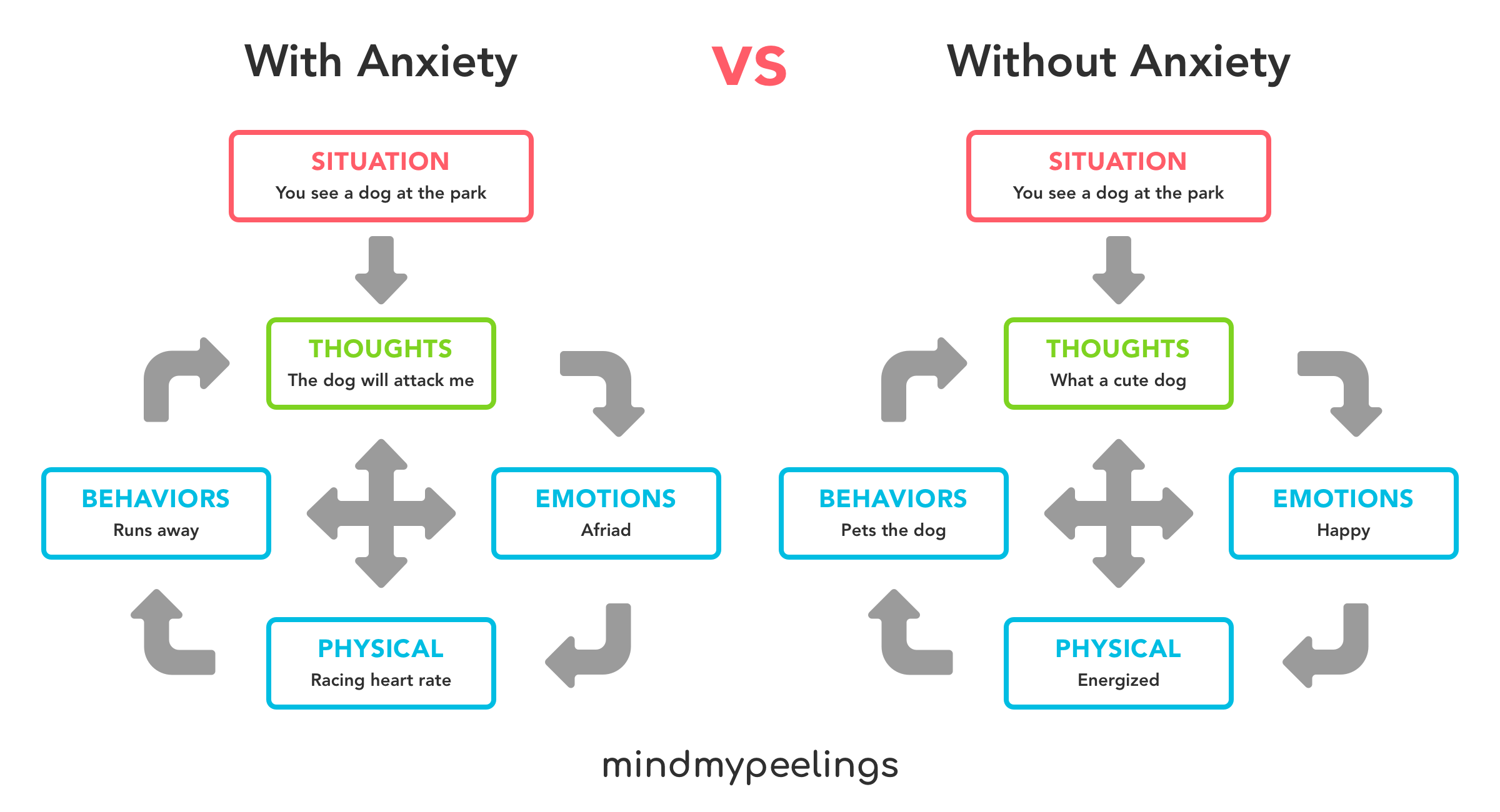What Principle Underlies Cognitive Behavioral Therapy
Cognitive-behavioral therapy is a type of talking therapy focused on rationalizing your negative thoughts and behaviors. This is achieved by challenging cognitive errors and reframing them more rationally.
Although treatment should be tailored to each individual's problems, CBT has 10 underlying principles that are for everyone. This includes being structured, time-based, and educative.
CBT promotes being your own therapist and takes a proactive approach to treatment and relapse prevention.
What is CBT
Cognitive Behavioral Therapy (CBT) is a form of psychological treatment that explores the links between thoughts, emotions, and behaviors.
CBT is a goal-oriented, time-based, structured treatment that is effective for a range of mental illnesses such as anxiety disorders and depression.
It is the most widely researched psychotherapy and has a strong evidence-based framework that supports the effectiveness of the treatment.
Basics of CBT
CBT is focused on learning to alter your thoughts (cognitions) and your actions (behaviors), which is why it is called cognitive-behavioral therapy.
Aaron Beck, known as the Father of CBT, defined three levels of cognition:
Core Beliefs
Dysfunctional Assumptions
Automatic Negative Thoughts
1. Core Beliefs
Core beliefs are learned and influenced by your early childhood experiences. They are deeply rooted in your belief system and define negative views you have about:
One’s Self: “I’m worthless and hate myself”
The World or Environment: “Why does no one care about me”
The Future: “Thing’s will never get better”
2. Dysfunctional Assumptions (Cognitive Distortions)
Dysfunctional Assumptions occur because we tend to focus on the negatives. This causes a distorted perception of reality and misinterpretation of information.
These cognitive distortions are irrational thought patterns that are exaggerated by negative thinking and feelings. There are 15 common distortions that distort our perceptions of reality in a negative way.
3. Automatic Negative Thoughts
Automatic Negative Thoughts (ANTs) are involuntary negative perceptions of reality that occur habitually. They can be difficult to recognize because they are fleeting and cause negative emotions to occur.
You can challenge ANTs by altering your thoughts and reframing them more rationally and positively.
Beck’s Cognitive Model
The CBT model was developed by Aaron Beck and used as a framework to understand a person’s mental distress. This framework follows a simple process:
It starts with a distressing situation/trigger → which causes a person to have negative thoughts → this causes negative emotions and physical distress → which leads to negative behaviors.
Here is an example of someone who gets anxious around dogs compared to someone who isn't in the same situation:
This visual representation of your anxiety helps you understand what is actually happening. It can help you realize that your thoughts are not facts and seeing them laid out in this framework can help break the cycle.
History of CBT
The adoption of cognitive-behavioral therapy progressed slowly over time and was considered controversial during its development.
Dr. Albert Ellis pioneered behavior therapy in the 1950s with his work on helping patients identify and challenge irrational thoughts.
In the 1960s Dr. Aaron T. Beck developed the practice for cognitive behavioral therapy. His theories on cognitive distortions helped evolve CBT to what we know today.
Aaron Beck’s approach to psychotherapy was groundbreaking and the scientific evidence today has proven the efficacy of his theories.
Dr. Judith S. Beck followed her father’s footsteps and made a significant impact on CBT as well. She developed 10 principles of cognitive-behavioral therapy to provide an effective CBT treatment program.
Principles of CBT
Although therapy should be tailored to an individual's needs, Judith Beck defined 10 principles that underlie cognitive behavior therapy for all patients. These principles are outlined in her book: Cognitive Therapy: Basics and Beyond.
1. CBT is based on an ever-evolving formulation of patients’ problems and an individual conceptualization of each patient in cognitive terms
The patient's current thinking patterns and problematic behaviors are identified. Several factors must be considered including the patient's life experiences, throughout childhood, and even through the therapy sessions.
A conceptualization of the patient is formulated based on the information gathered to provide an accurate picture of the patient’s whole situation. This conceptualization is refined each session as more information becomes available.
2. CBT requires a sound therapeutic alliance
It is important to have a strong trusting relationship between the therapist and patient. The therapist should be able to provide care, warmth, empathy, and competence.
3. CBT emphasizes collaboration and active participation
Teamwork is encouraged throughout the sessions and decisions of what to work on and how often are decided together. Active participation from the patient is important for making a lasting impact in their treatment.
4. CBT is goal-oriented and problem-focused
The patient should set specific goals during the initial sessions. Goals are necessary to evaluate and respond to thoughts that interfere with those goals. This helps the patient easily identify and interrupt those thoughts.
5. CBT initially emphasizes the present
The treatment should be focused on current problems and specific situations that are distressing to them.
CBT only considers the past when the patient expresses a strong preference to do so or the patient gets stuck in dysfunctional thinking and trying to understand their childhood can potentially help modify their core beliefs.
6. CBT is educative, aims to teach the patient to be their own therapist, and emphasizes relapse prevention
Teaching the patient to understand the process, how their thoughts influence emotions and behavior, how to identify and evaluate their thoughts and beliefs, and plan for behavioral changes is an essential part of CBT.
7. CBT aims to be time-limited
Straightforward anxiety and depression can typically be treated within 6 to 14 sessions. However, for those with more severe mental illnesses and rigid beliefs, the time frame can range from a few months to years if necessary.
8. CBT sessions are structured
Structured treatment helps maximize efficiency and effectiveness. This process includes:
Introduction: doing a mood check, a brief review of the week, collaboratively setting an agenda for the session
Middle: reviewing homework, discussing problems on the agenda, setting new homework, and summarizing
Final: eliciting feedback
9. CBT teaches patients to identify, evaluate, and respond to their dysfunctional thoughts and beliefs
Therapists help patients identify key cognitions and adopt more realistic, rational perspectives.
This is achieved through the process of guided discovery by questioning their thoughts to evaluate their thinking. Also, the therapist creates behavioral experiments for the patient to directly test their thinking.
10. CBT uses a variety of techniques to change thinking, mood, and behavior
Behavioral and problem-solving techniques are essential in CBT. The types of techniques the therapist will select will be influenced by the conceptualization of the patient, the problem you are discussing, and your objectives for the session.
CBT Treatment
What you can expect to see from a CBT treatment program with a therapist:
Structured and Educational: CBT sessions are well structured and meant to be educational. This means there is as much emphasis on work outside of your therapy session as during.
Collaborative: Your therapist will work with you and expect active participation and commitment to see positive changes.
Goal-Oriented: Your therapist will work with you to define specific goals that solve your existing problems.
Time-Based: Most people can expect their program to have 6-14 sessions. CBT is not meant to be continuous, rather you are expected to learn the skills to be your own therapist.
CBT is a type of therapy that requires active participation from the patient. You need to put in the effort and work to benefit from the treatment.
What You Will Learn in CBT
The main focus of CBT is to alter your negative thoughts and behaviors to be more rational. Throughout your CBT sessions you can expect to learn to:
identify problems and build awareness of your negative thoughts and behavior
recognize your thoughts are opinions and be able to distinguish between facts and irrational thoughts
consciously challenge and reframe dysfunctional assumptions
set achievable goals
be more present and kind to yourself
develop a more positive perspective of situations
be more resilient and in control of your problems
become your own therapist and practice relapse prevention
Basic CBT Techniques
There are various techniques that will be utilized during your CBT treatment. Here are 10 common techniques used in cognitive therapy:
ABC Model: Helps you reinterpret irrational beliefs resulting in alternative behaviors.
Activating Event: An event that would lead to emotional distress or dysfunctional thinking
Belief: The negative thoughts that occurred due to the activating event
Consequences: The negative feelings and behaviors that occurred as a result of the event.
Guided Discovery: The therapist will put themselves in your shoes and try to see things from your viewpoint. They will walk you through the process by asking you questions to challenge and broaden your thinking.
Exposure Therapy: Exposing yourself to the trigger can reduce responses. It may be uncomfortable during the initial sessions but is generally performed in a controlled environment with the therapist's help. This treatment is beneficial for phobias.
Cognitive Restructuring: This treatment focuses on finding and altering irrational thoughts so they are adaptive and reasonable.
Activity Scheduling: The therapist will help identify and schedule helpful behaviors that you enjoy doing. This can include hobbies or fun and rewarding activities.
The Worst Case/Best Case/Most Likely Case Scenario: Letting your thoughts ruminate and explore all three scenarios helps you rationalize your thoughts and develop actionable steps so control of the behavior is realized.
Acceptance and Commitment Therapy: This approach encourages you to accept and embrace the feelings rather than fighting them. This differs from traditional CBT where you’re taught to control the thoughts.
Journaling: Recording your thoughts in a journal or diary can help build awareness of cognitive errors and help better understand your personal cognition.
Behavioral Experiments: These experiments are designed to test and identify negative thought patterns. You’ll be asked to predict what will happen and discuss the results later. It’s better to start with lower anxiety experiments before tackling more distressing ones.
Role-Playing: This technique can help you practice difficult scenarios you may encounter. It can lessen the fear and help improve problem-solving skills, social interactions, building confidence for specific situations, and improving communication skills.
Pros and Cons of CBT
Although the cognitive-behavioral approach has been proven to be effective for most people with a wide range of applications, it isn’t necessarily for everyone.
Here are the advantages of the CBT approach:
can be completed in a relatively short period of time for most people
can help treat some mental illnesses where medication alone has not improved symptoms
focuses on altering your thoughts and behaviors to make changes to how you feel
teaches you practical strategies that can be applied in your daily life
provides the skills for you to be your own therapist enable you to be proactive and prevent relapses
Some of the disadvantages of CBT are:
requires the patient to play an active role and be committed to the process which can take a lot of effort and your time
proves difficult for people with more severe mental illness or those with learning disabilities
involves confronting your anxiety, this initial exposure can be uncomfortable for some people
addresses the individual’s needs, the patient’s environment (family and interactions) are not addressed and can have a significant impact on their well-being
the cognitive model focuses on a narrow scope and focuses on only present problems instead of underlying causes
Now that you are familiar with the principles of CBT and treatment techniques utilized, start challenging and reframe automatic thoughts today.





